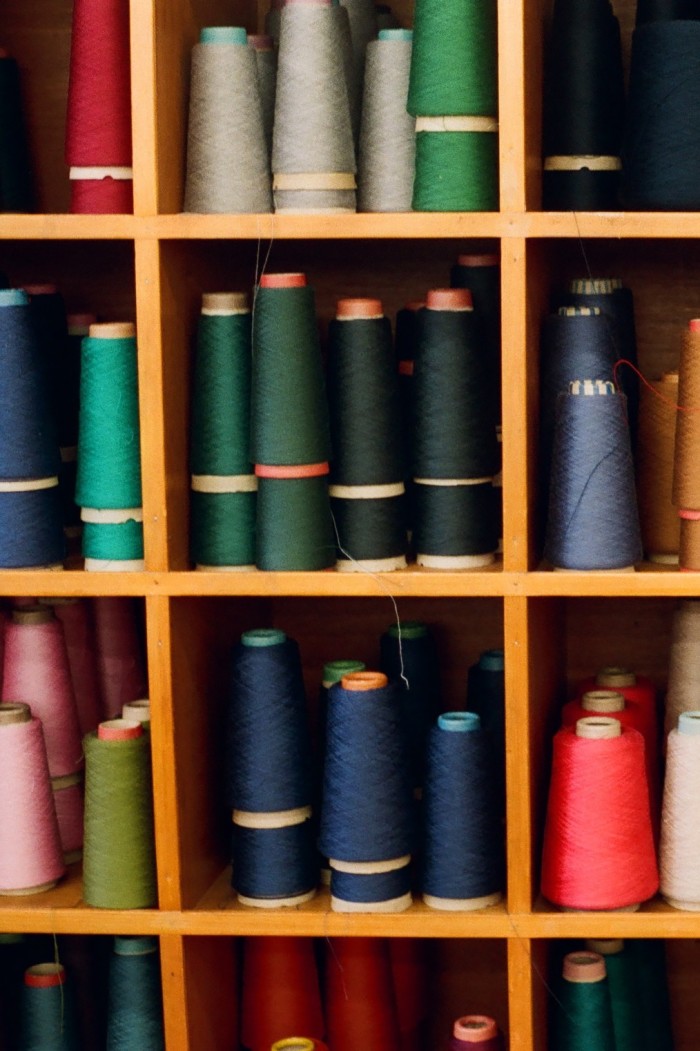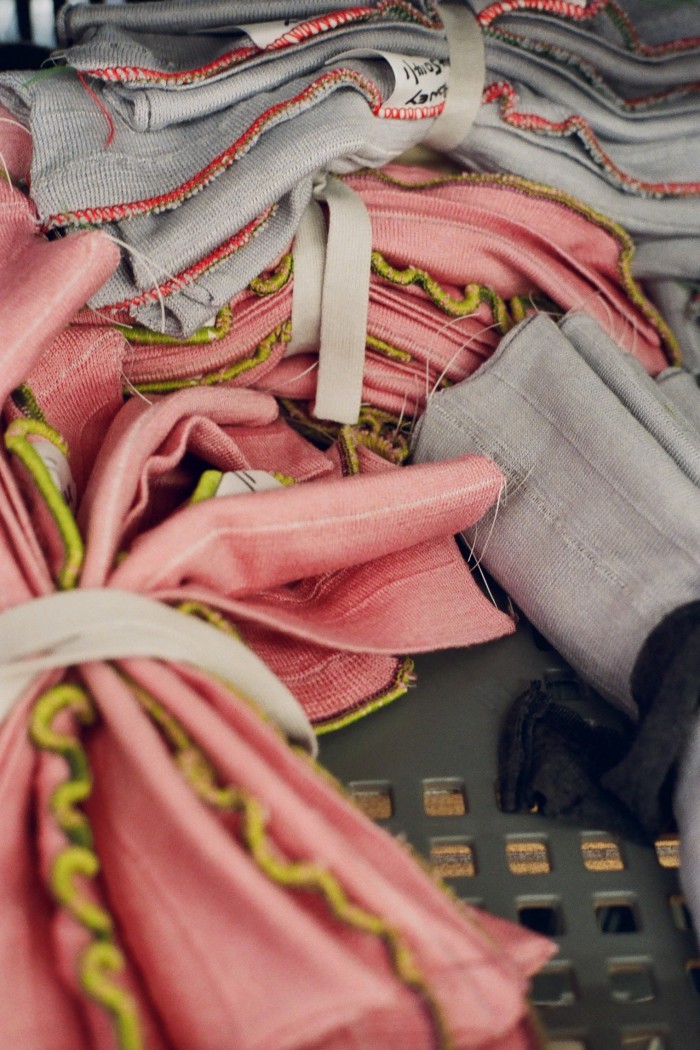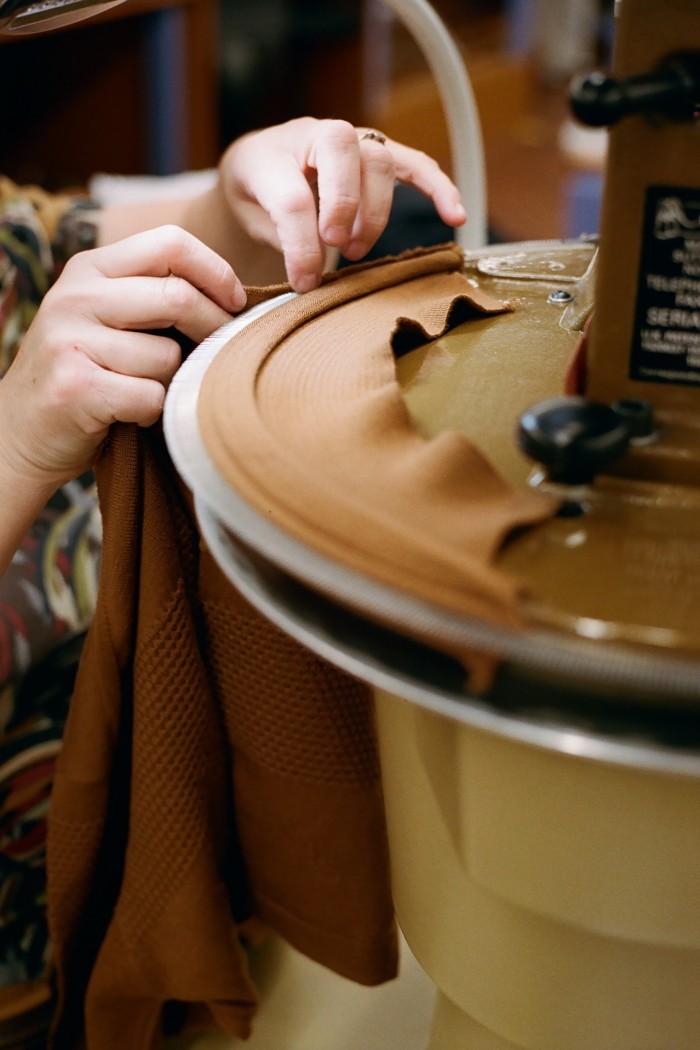
Can the UK become a more competitive manufacturing location for luxury fashion brands? Ian Maclean, managing director and eighth generation leader of John Smedley, his family’s knitwear firm, is a firm believer that it can.
From April, John Smedley, which has been based in Derbyshire since 1784, making it the world’s oldest operational knitwear factory, will open up for third-party manufacturing for the first time in more than 40 years.
The first to sign up for Smedley’s factory is fellow Royal Warrant holder Daks, which has committed to bring its manufacturing back to UK shores, starting with a 12-piece knitwear collection. The brand first went offshore with key product lines such as tailoring and trousers in early 2000 following the closure of its factories in Scotland.
Head of product Nicholas Bell declined to share a specific timeline for how long it would take to bring production home but says the brand will continue to “look for specialist manufacturers” as “we believe the Made in the UK label brings added value as well as a positive perception with our customers. We have a significant business in Asia where the appreciation of the Britishness of the brand and our 130-year heritage are key factors.”
John Smedley took off in the 1950s as it grew a legion of notable fans, including Audrey Hepburn and Marilyn Monroe, who both wore the label’s Catkin roll-neck sweaters; Sean Connery, who wore its blue polo shirt in the 1962 James Bond film Dr No, where he was the first actor to portray the fictional British secret agent; and Queen Elizabeth II, which led to the awards of two Royal Warrants — the first in 2013, followed by another in 2021.


At its height, John Smedley also produced knit garments for British luxury brands including Burberry, Paul Smith and Vivienne Westwood — a part of the business that accounted for about half of total revenues, according to Maclean. But that began to drop off from the late 1980s amid a manufacturing exodus that saw many companies — in fashion as well as other industries — offshore production to competitively priced countries such as China and India.
“As globalisation took hold some 30 or 40 years ago and much cheaper manufacturing appeared abroad, brands migrated to sourcing and making their products in those locations,” recalls Maclean.
By 2009, China had become the world’s largest exporter of goods, and the largest trading nation in goods in 2013, according to the OECD data compiled by McKinsey and Co. But that may start to change as the overseas price advantage that once enticed so many international businesses is diminishing.
Various factors, including rising production and materials costs, quality issues and longer lead times following Brexit and the pandemic, as well as Chinese President Xi Jinping’s growing hostility towards foreign companies, have prompted executives in the West to prioritise shortening their supply chains.
Early indicators began about four years ago when savvy brands sought to “de-risk operations” in China by securing a back-up supplier elsewhere, says Laura Morroll, director of operational restructuring, retail and supply chain at PwC. That eventually led to nearshoring — where companies still manufacture overseas but in a nearer country — as it allowed for quicker replenishments or design adjustments.
A 2024 executive survey conducted by PwC in association with Make UK, which champions engineering and manufacturing in the country, found that more than half of 200 senior executives now see the UK as a more competitive location for manufacturing — a much more positive outlook compared to the 31 per cent the year prior — with 61 per cent believing that the opportunities outweighed the risks, due to improving conditions and a more supportive and stable policy environment.
America, with its Inflation Reduction Act, has also increased its appeal as a place to do business. Under President Joe Biden, the country has designated $369bn for clean energy incentives and reduced inflation by lowering energy costs, PwC’s report highlighted. Despite this, UK companies, such as John Smedley, are bullish about their potential to grow.
“For a long time, price drove everything. They didn’t always have the same standards of health and safety,” says Maclean. As modern, more ethically responsible consumers increasingly question where and how their products are made, more brands will prioritise supply chain transparency, he believes.


“The benefits to UK manufacturing are that we are much closer to our partners and we have better control of where and in what conditions our products and raw materials are made,” adds Daks’s Bell. “We have always moved a considerable amount of goods and raw materials between the UK and the EU. Since Brexit, we have seen a significant increase in our customs and administrative costs, and these must also be taken into account.”
The challenge for UK manufacturers is scale. “How do you replicate the mass volume that China can produce in a country that has largely closed down all of its manufacturing capabilities? And to start cranking that up again is problematic when you look at the volume that some retailers want to do,” warns Morroll. For luxury brands, which are less reliant on mass scale production, that’s less of a concern, she acknowledges — and it’s one that can also be solved by improved technology and automation.
John Smedley has spent upwards of £3mn to install new machinery ahead of the factory’s opening. A further £1.5mn will be invested this year, to support renovations as well as an expansion of its design and product development team — who join the many craftspeople who have been employed at the factory for decades — and new technology to develop designs.
“When we went to market with this project and had speculative conversations with brands, it was a real frustration of theirs to work with manufacturers who didn’t understand the fashion calendar, or to not have enough support between a manufacturer and a designer,” says deputy managing director Jess Mcguire Dudley. “That’s one of the areas we have really invested in by hiring additional programmers and garment technologists, who work with our designer director to educate brands on how best to manufacture their products.”
The improvements will “give us the flexibility and creativity that we want to move our business forward”, adds Maclean. His goal is for third party manufacturing to account for a third of the business alongside retailing and wholesale. “To have that balance and the ability to adjust to economic shocks is our ambition and it’s that kind of decision-making that has kept us going for the last 240 years. I anticipate it will keep us going in the future as well.”
Find out about our latest stories first — follow @financialtimesfashion on Instagram — and subscribe to our podcast Life and Art wherever you listen

